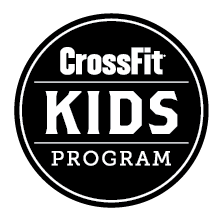15
Oct / 12
Are Your Pillows Helping or Hurting You?
posted by: Sean

Watching Cade sleep one afternoon on our bed, I noticed how soundly he slept lying flat on his back without using pillows like Ruth or I. He was perfectly happy lying flat on his back with one of his favorite blankets keeping him warm. Cade usually sleeps on his back or his side, but has on occasion also slept on his stomach…all without the use of a pillow (unless Ruth or I count when he sleeps on us). Seeing Cade’s ability to sleep so well got me me thinking if pillows are really all that helpful or are they unnecessary modern-day luxuries we’ve simply grown accustomed to having around and feel obligated to use them because they’re in our bed. The answer as usual is: It Depends. It all comes down to maintaining a neutral spine and proper posture especially in the neck (cervical spine). So if I define a pillow as something used to reinforce proper body alignment of the head and neck (and shoulders to a lesser degree), then yes pillows are necessary. Cade, whose head is much larger in proportion to the rest of his body, doesn’t require a pillow because the size of his head allows him to lay flat and keep his head and neck aligned. As we mature and grow our shoulders and thoracic cavity become broader and the ability to maintain our cervical alignment while lying becomes nearly impossible. Our body’s proportions change and now when we lay on our back our heads tilt back into cervical extension, or when we lay on our sides our heads tilt to the side into cervical abduction. We need something to help maintain the neutral alignment of our cervical spine, so yes pillows (as defined above) are necessary.
However, the question that needs to be addressed is are you using pillows that help promote this alignment based on the position you prefer to sleep in, or have to sleep in if situations aren’t ideal? According to Pillows.org the type of pillow used by back sleepers, side sleepers, and stomach sleepers differs because each position requires a different amount of support to maintain the posture and body alignment. Understand, however, that traditional fluffy, soft pillows are a “nice to have” but not “essential”. Makeshift “pillows” can range from your arm or fist, to a rolled up towel or block of wood. Comfort is somewhat subjective to the individual, so understand the goal is to find what helps you keep yourself lined up while you sleep. The link above or the video below provides more detail on each sleeping position and the type of pillow that accommodates that position.
Personally, I find that I fall asleep on my back but often find my side more comfortable as the night goes on, usually my right side more so than my left. So according to the Pillows.org information it would be helpful to have a thinner pillow to use while I lie on my back, and a deeper more supportive pillow nearby for when I roll to my side. Luckily I have both, and have learned the hard way about the types of pillows I prefer in each position. If I use the thicker, firmer foam pillow when I’m laying on my back I find that it really shoves my neck and head too far forward and wreaks havoc on my neck and upper back muscles. Also, when I don’t have enough neck support when I sleep on my side I find that the muscles along the sides of my neck and my traps are wrecked in the morning. After a night or two of crappy sleep posture I find I get headaches caused by trigger points in any or all of the areas mentioned, and I feel more run-down than usual because the quality of my sleep suffered.
Kelly Starrett of MobilityWod.com offers his two cents on pillow usage to promote alignment and some creative ideas using pillows to aid in recovery. Check it out:
References:
Mark’s Daily Apple:
- “Does It Matter How Grok Slept?” (July 1, 2010)
- “How to Improve Sleep Posture” (July 2, 2010)
- “Bedding: Do We Really Need It?” (July 6, 2010)
- “Episode 38: Your Pillow Is Killing Your Neck?” (September 28, 2010)
- “Episode 39: Sleep, Pillows, and What Your Back Says About Your KB Swing” (September 29, 2010)
- “Why Pillows are Important to Your Well-Being” (April 15, 2011)
WOD 10.15.12
Overhead Squat 2-2-2
“Death by 10 Meters”
Every minute, on the minute:
1st minute run 10 meters, 2nd minute run 20, etc.
Rest as long as you have time remaining. Keep progressing until you are unable to complete X number of runs in the minute. Runs completed shuttle run style in 10 meter intervals.
**Penalty for every minute under 16 is 10 burpees. Example: Athlete completes 13 runs but fails to finish 14. Athlete must cash out with 30 burpees.**


 310.465.6565 |
310.465.6565 |
























4 Responses to “Are Your Pillows Helping or Hurting You?”
the Pooj
October 15, 2012 at 10:22 AM
<3 baby inspired posts
Amanda
October 15, 2012 at 11:52 AM
Who’s that dude next to Ruth? He looks strangely, vaguely familiar.
I have some funny nephew pix of baby sleeping positions that I don’t think I will want to try…
becky
October 15, 2012 at 12:03 PM
great post Sean! and yes, i love that lil Cade inspired this. aw!
Amanda
October 15, 2012 at 12:29 PM
In all seriousness, thanks for the post. I have been struggling with sleeping since before my surgery. Doc Murray caught that I have some nerve impingment that’s causing some of it. I’m looking forward to applying your articles to practice, seeing if any of it helps.